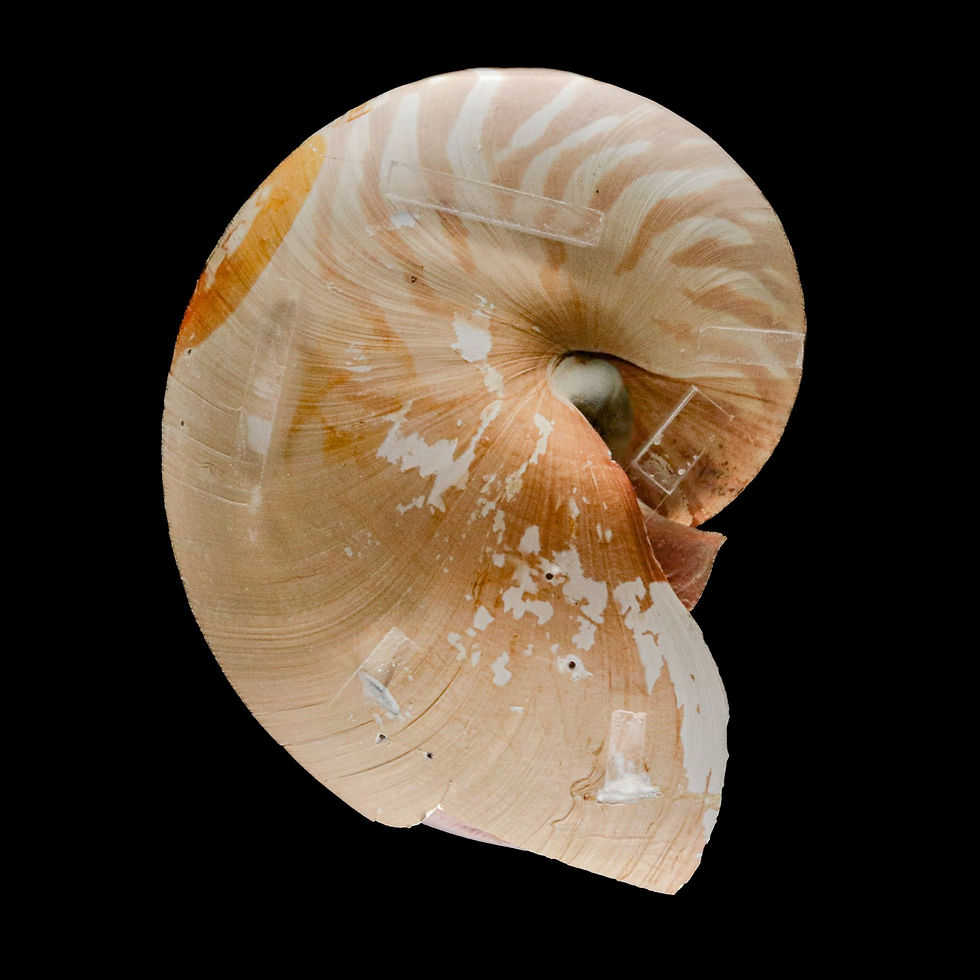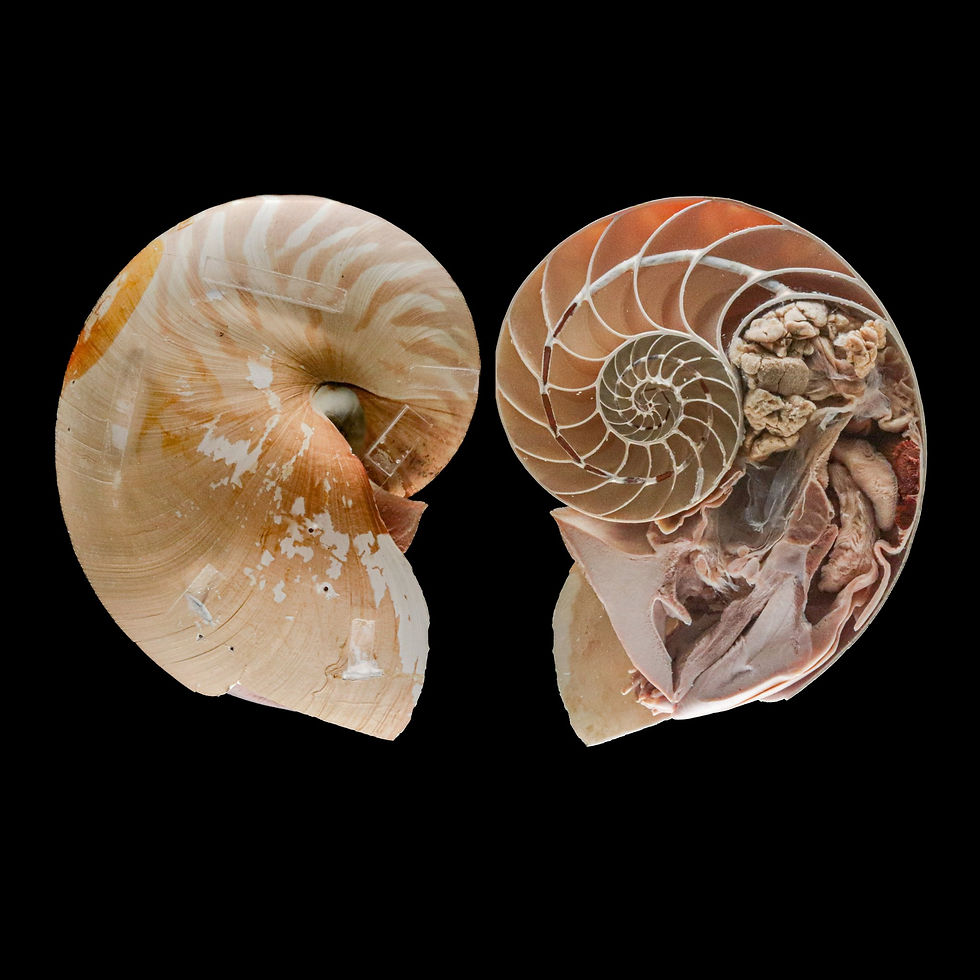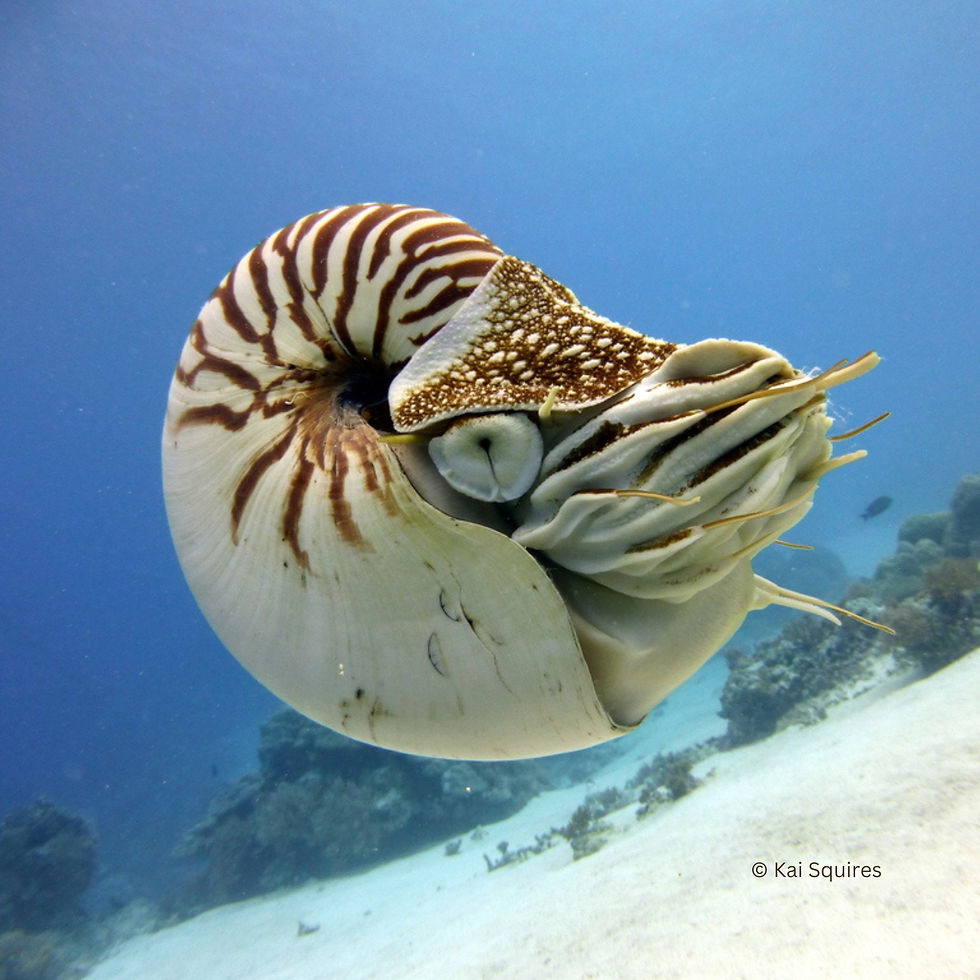Specimen Showcase | Sailors from the Past⚓️
- Hong Kong Biodiversity Museum

- Mar 13
- 3 min read
If you have seen a specimen of a 𝘕𝘢𝘶𝘵𝘪𝘭𝘶𝘴 species, it would immediately remind you of prehistoric creatures found in fossils or on documentaries🦖🦕. Considering their connection with ancient cephalopods, it is no wonder that species from this genus are sometimes referred to as “living-fossils''🤔; a highly misleading expression as it suggests that these current species did not evolve for dozens or hundred of millions of years🧏🏻♀️, which of course they did, but have just retained some of the main morphological characteristics shared with their ancestors. In fact, species from 𝘕𝘢𝘶𝘵𝘪𝘭𝘶𝘴 Linnaeus, 1758 are descendants of a large group of cephalopods called 𝘕𝘢𝘶𝘵𝘪𝘭𝘰𝘪𝘥𝘦𝘢 Agassiz, 1847 that cruised the seas during the Cambrian⏳, approximately 500 million years ago, when marine invertebrates 🐙 diversified tremendously!

Among the large subclass of 𝘕𝘢𝘶𝘵𝘪𝘭𝘰𝘪𝘥𝘦𝘢 Agassiz, 1847, that existed, Nautilus is one of the two genera that remains to this day. You can find these impressive creatures in the tropical waters of the Indo-Pacific region, especially around coral reefs. As they cannot survive in temperatures above 25°C, they stay at around 500-700m in reef slope waters in daytime to evade predators and the heat, and come up near the surface at night to look for food or lay eggs. Nautilus are opportunistic hunters and scavengers🥀, meaning they will actively look for animal remains but will not hesitate to eat any prey they come across, for example shrimps🦐 and crabs🦀.

The Nautilus are quite remarkable 💪🏼 in a sense that with their sister group Allonautilus, they are the only existing cephalopods to present an external planispiral shell. What is a planispiral shell? It is a condition where the shell coils around an axis on a horizontal plane and the diameter increases with distance from the coil. In other words, the width becomes bigger as the shell grows further away. The shell also plays a crucial part in maintaining their neutral buoyancy. A mature Nautilus can have on average 30 chambers in their shell, each separated by a wall called the septum, and the animal itself resides in the outermost and largest chamber. Most of these chambers are filled with a fluid called the cameral fluid. A thin tube called the siphuncle connects all the chambers and controls the proportion of liquid to gas inside the chamber by osmotic pressure. The liquids are drawn in and out of the chambers as the salinity of the cameral fluid changes. With this mechanism, the Nautilus can create a long term change in buoyancy with slight changes in its chamber fluids and maintain a neutral buoyancy where they are always slightly heavier than seawater.

How about its movement? To swim around🏊🏻♀️, the Nautilus relies on jet propulsion 🚀 produced by its funnel. The funnel is a wide tube of skin. When the Nautilus needs to move in a certain direction, it simply needs to orient its flexible funnel in the opposite direction⬅️, and the funnel muscle and retractor muscle to contract simultaneously. The contraction of the mantle cavity forces out a stream of water, hence propelling the Nautilus forward.

Luckily for you, no need to dive 🥽 deeply into the ocean to see how remarkable is the Nautilus and its hundreds of millions of years of evolution, you just have to join one of our free tours at the Hong Kong Biodiversity Museum.
Text: Audrey Wong




Comentarios